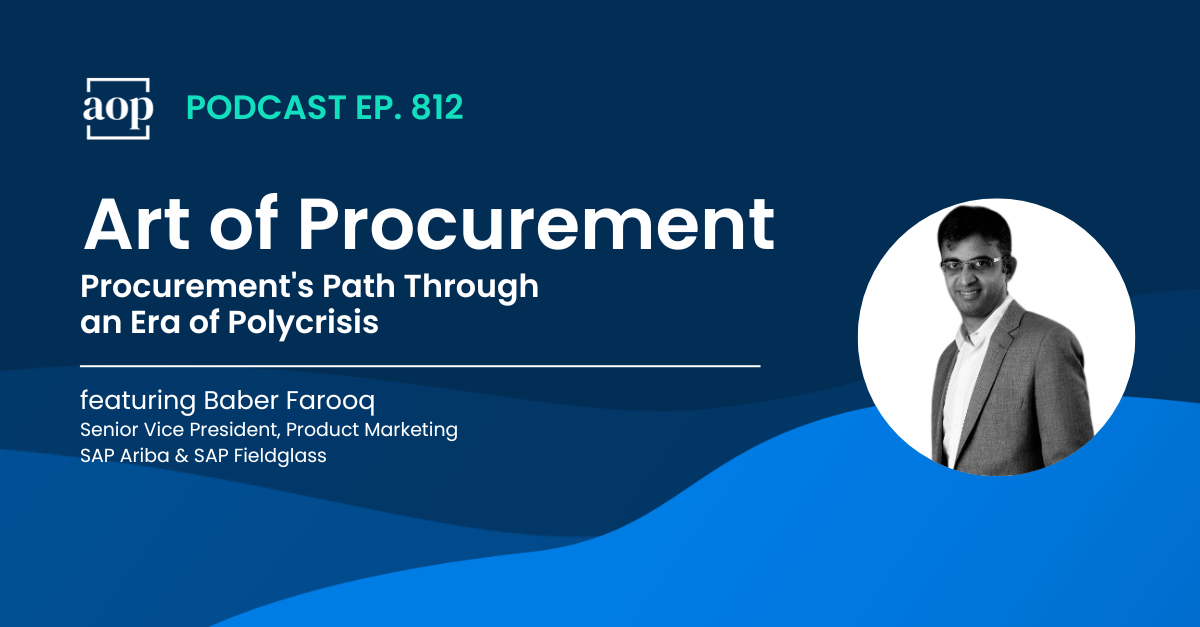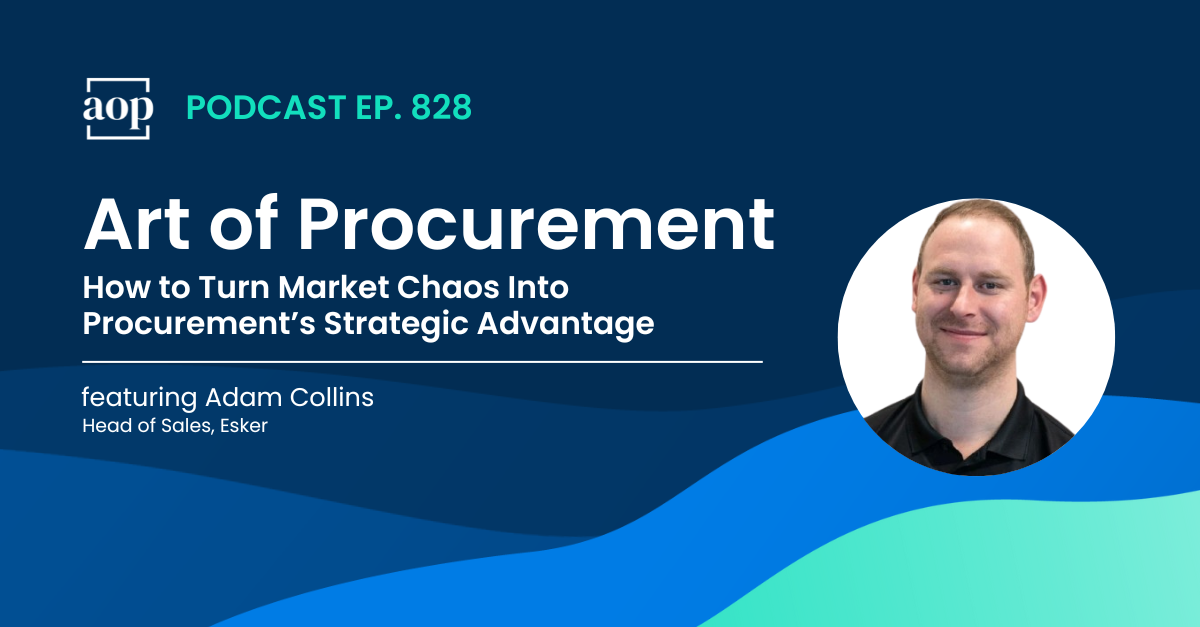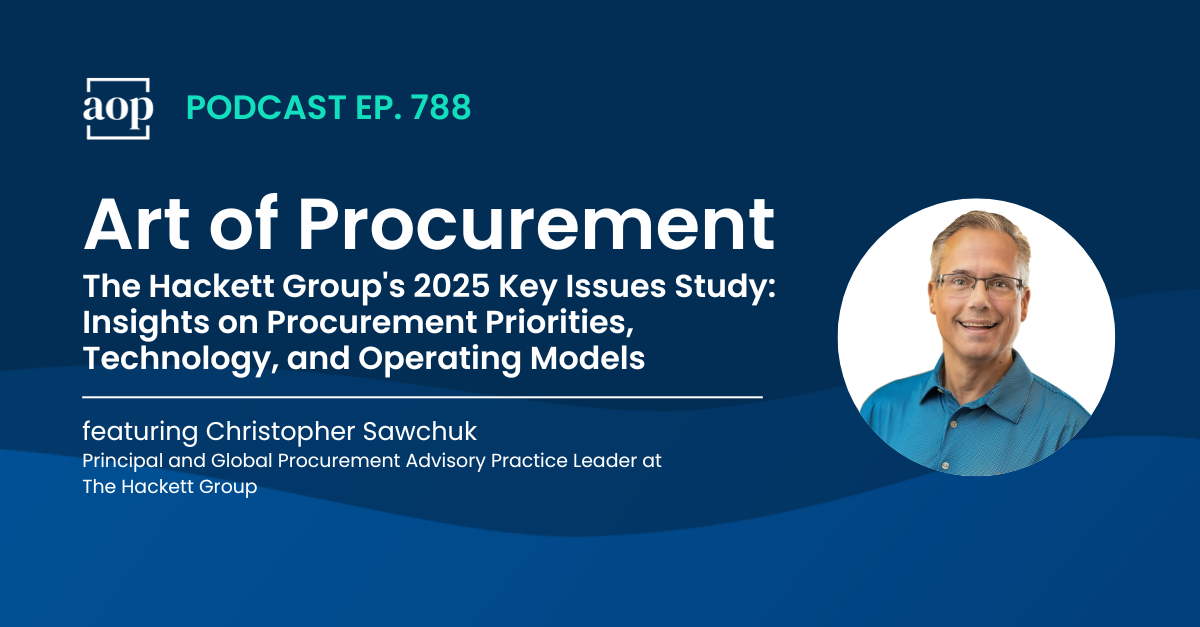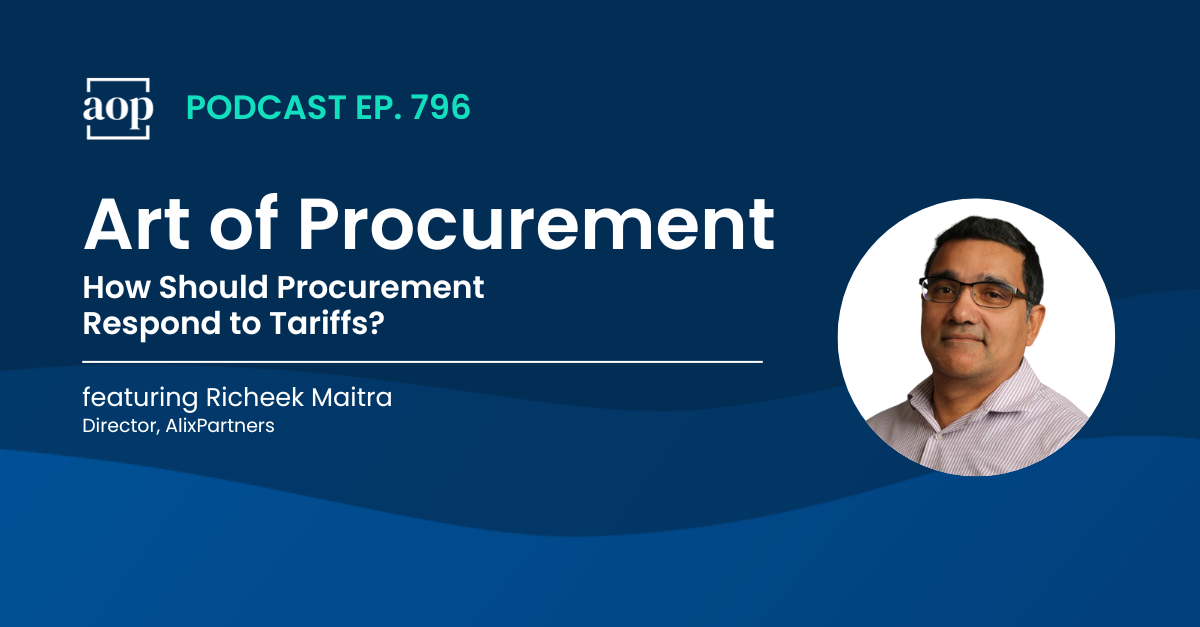
“The greatest challenge facing the world today isn't tariffs or monetary uncertainty – it's stagnating productivity.”
- Baber Farooq, Senior Vice President, Product Marketing SAP Ariba & SAP Fieldglass
Today's procurement leaders navigate unprecedented complexity, from geopolitical instability and shifting regulatory mandates to the uncertain future of generative AI and ESG priorities continually hovering just out of immediate reach.
In the report, “The Resilient Edge: Procurement in an Era of Polycrisis,” from SAP and Economist Impact, procurement's strategic role during this polycrisis is cast into sharper relief.
In a recent episode of the Art of procurement podcast, Baber Farooq, Senior Vice President of Procurement Solutions at SAP, shares key findings and thoughtfully examines procurement's evolving mandate as revealed through extensive global research.
Here, in Baber's own words, are some stand-out moments from our conversation:
Supply Chain's Rising Dominance
“I think it's no surprise when we have the tariff wars and the monetary uncertainty that has existed for the past couple of years. You really want to take a very close look at your costs and you want to take a very close look at your supply chains.
“That's coming through in spades, I think, across the board, across every person, across every region. North America was the highest, again, no surprise given the political situation in North America in terms of prioritizing the potential reconfiguration of supply chains. But I think that's something that if we compare it to just a year to two years ago, was not really on the map.”
Baber highlights that while category management was top-of-mind just a few years ago, macroeconomic instability now pushes supply chain considerations front and center. Procurement leaders must proactively reassess their supply strategies.
Realistic AI Adoption Trends
“Have we seen the remarkable use cases that we know may be possible, like sourcing bots, negotiating with each other, humans not getting involved? No, I don't think we have. I think most organizations are trying to understand how far away those use cases are.”
Procurement must start preparing skill sets and data foundations now for AI adoption. Baber stresses that while true generative AI implementations are limited, the groundwork today will define tomorrow's AI advantage.
Sustainability's Regulatory Horizon
“If the regulatory impact is coming in the form of tariffs today and not carbon controls, then you're going to say, ‘Okay, I need to prepare for that regulatory impact and that uncertainty. But clearly, I think, if you ask a room full of executives that say, “‘Hey, how many of you think there will be carbon regulation 10 years from now? I think most would raise their hands.
“I think that's reflected in the survey that we have to prepare for that eventuality at some point in time, even though people keep kicking the can down the road on some of these issues.”
Baber warns procurement leaders against perpetually deprioritizing ESG. Companies taking tangible actions today will hold a significant strategic advantage once regulations inevitably arrive.
Spend Analysis: More Vital Than Ever
“Give me a spend analytics tool that can give me insights today, even if it's not the flashiest whiz-bang AI solution. But also, give me a spend analytics tool that is going to enable me to take advantage of generative AI when it's promised.”
Today's spend analysis tools must answer sophisticated questions. Procurement should demand analytics solutions that can deliver strategic insights, navigate crises, and lay the foundation for advanced AI models.
Intake Management—Closing Stakeholder Experience Gaps
“I think a lot of the demand for intake is saying, ‘Can you just make this entire process digital in a way that all these systems talk to each other so that I don't have to go to multiple places?
“That's naturally something that the stakeholders of procurement, when we talk about procurement requests, feel the pain of more than procurement itself, which is often defining that process.”
Procurement teams should revisit intake management from a stakeholder-centric viewpoint. Streamlining processes and leveraging orchestration tools ensure procurement elevates its strategic perception.
Generative AI's Triple Barrier Challenge
“To achieve the promised land, you need to be training on very large data sets across multiple customers. We talk about the $6 trillion of spend that we harness in our business network. Before we can use that to train a large language model, we would need permission from all of our customers to do so. I mean, we may be the custodians, but it is not our data.
“It's very important to understand what assurances our customers would need to allow that to happen. Do we have all the answers on risk? The market wants to understand, and they want a lot of assurance across all these questions and answers, because their IT teams and risk teams will very legitimately be very careful as they trend in this area.
“The most interesting thing is that we gave an option as well in that response. And that option was: under no circumstances will I allow my data to be used for LLM training. Not one person selected that answer out of 2,000 people.
“I think there's a culture change that we're witnessing. I think if we asked that same question three or four years ago, that number would have been very high.”
Baber recommends that procurement leaders engage IT and risk teams now to clearly articulate the assurances required for leveraging generative AI securely and effectively.
Links:
- Baber Farooq on LinkedIn
- Infographic: The Resilient Edge - Procurement in an Era of Polycrisis
- Video: The Procurement Imperative
- Whitepaper: The Resilient Edge: Procurement in an Era of Polycrisis
- Optimizing Procurement’s Source-to-Pay Strategy
- Bridging the Confidence Gap to Achieve the Best Business Outcomes
- Learn more about SAP
- SAP's Provider Page
- Subscribe to This Week in Procurement




